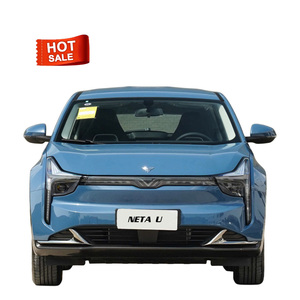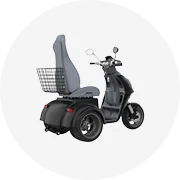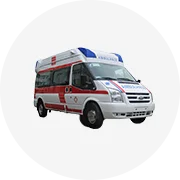Types of X1000 Motorcycles
The X1000 motorcycle series offers diverse models tailored to different riding styles and preferences. Understanding the characteristics of each type helps riders make informed decisions when selecting their ideal motorcycle.
| Type | Key Characteristics | Best For | Popular Models |
|---|---|---|---|
| Standard | Upright riding position, versatile design, balanced performance | All-purpose riding, beginners to experienced riders | Honda CB650R, Yamaha MT-07 |
| Sport | Aggressive riding position, high performance, aerodynamic design | High-speed riding, track days, experienced riders | Honda CBR600RR, Kawasaki Ninja ZX-6R |
| Scooter | Step-through frame, automatic transmission, fuel-efficient | Urban commuting, short-distance travel | Vespa GTS, Honda PCX |
| Touring | Comfortable seating, large fuel tanks, storage capacity | Long-distance travel, highway cruising | Honda Gold Wing, Yamaha FJR1300 |
| Adventure | Rugged build, versatile capability, comfortable for long rides | Mixed terrain, on-road and off-road exploration | BMW GS series, Honda Africa Twin |
| Cruiser | Relaxed riding position, low seat height, laid-back style | Casual riding, highway cruising | Harley-Davidson Sportster, Indian Scout |
| Dual-Sport | Lightweight, versatile, street-legal with off-road capability | Mixed terrain, adventure riding | Suzuki V-Strom, Kawasaki Versys |
Standard/Naked Motorcycles
Standard motorcycles feature an upright riding position that offers excellent visibility and comfort for daily use. Their versatile design makes them suitable for various riding conditions from city commuting to weekend getaways.
Ideal for: Riders seeking a balance of comfort, handling, and performance without specialization in any one area.
Sport Motorcycles
Engineered for high-performance riding, sport motorcycles feature powerful engines, responsive handling, and aerodynamic bodywork. The forward-leaning riding position optimizes control during high-speed cornering.
Ideal for: Enthusiasts who prioritize speed, acceleration, and dynamic handling capabilities.
Adventure Motorcycles
Adventure motorcycles combine on-road comfort with off-road capability, featuring higher ground clearance, sturdy suspension, and protective components for challenging terrain. Their ergonomics support long-distance travel with minimal fatigue.
Ideal for: Explorers who want a single motorcycle capable of handling diverse environments and extended journeys.
Expert Advice: When choosing between motorcycle types, consider your primary riding environment and frequency. For daily urban commuting, standards or scooters offer practicality, while frequent weekend escapes might make adventure or touring models more suitable.
Specifications and Components of X1000 Motorcycles
Understanding the key components of X1000 motorcycles helps riders appreciate their motorcycle's engineering and make informed maintenance decisions. Each component plays a vital role in the motorcycle's performance, safety, and longevity.
Engine
The heart of the X1000 motorcycle, the engine converts fuel into mechanical energy through internal combustion. Modern X1000 engines feature precision engineering with components like pistons, cylinders, valves, and crankshafts working in harmony to deliver reliable power.
Maintenance focus: Regular oil changes, valve adjustments, and timing checks
Frame
The structural skeleton of the motorcycle, X1000 frames are typically constructed from aluminum, steel, or composite materials. The frame design directly influences handling characteristics, weight distribution, and overall rigidity.
Maintenance focus: Inspection for cracks, corrosion, and alignment issues
Suspension
X1000 motorcycles utilize advanced suspension systems with front forks and rear shock absorbers to absorb road imperfections, maintain tire contact with the ground, and provide stability during acceleration, braking, and cornering.
Maintenance focus: Regular inspection of seals, oil levels, and spring preload adjustments
Wheels and Tires
The only components that contact the road surface, X1000 wheels are typically made from aluminum alloy for optimal strength-to-weight ratio. Tires are specifically designed with compounds and tread patterns that optimize traction across various surfaces and weather conditions.
Maintenance focus: Tire pressure checks, tread depth monitoring, and wheel alignment
Braking System
X1000 motorcycles feature hydraulic disc brakes with calibrated calipers that compress against rotors to create the friction necessary for deceleration. Many models include ABS (Anti-lock Braking System) for enhanced safety during emergency stops.
Maintenance focus: Brake fluid replacement, pad wear inspection, and rotor thickness measurement
Electrical System
Modern X1000 motorcycles incorporate sophisticated electrical systems that power ignition, lighting, instrumentation, and electronic rider aids. The system includes the battery, alternator, voltage regulator, and various sensors that monitor engine and motorcycle performance.
Maintenance focus: Battery terminal cleaning, charging system checks, and wiring inspection
Essential Maintenance for X1000 Motorcycles
Regular maintenance is crucial for ensuring optimal performance, safety, and longevity of your X1000 motorcycle. Implementing these maintenance practices helps prevent unexpected breakdowns and costly repairs while enhancing your riding experience.
Regular Oil Changes
Engine oil lubricates critical internal components, reduces friction, dissipates heat, and carries away contaminants. Fresh oil maintains these protective properties that deteriorate over time.
Recommendation: Change every 3,000-5,000 miles or according to manufacturer specifications, using the recommended viscosity and quality grade
Air Filter Maintenance
The air filter prevents contaminants from entering the engine while ensuring proper air-fuel mixture for combustion efficiency. A clogged filter restricts airflow, reducing performance and fuel economy.
Recommendation: Inspect every 4,000 miles, clean reusable filters, or replace disposable ones when dirty
Tire Care
Tires directly impact handling, traction, and safety. Proper maintenance ensures optimal contact patch size, even wear patterns, and reliable grip in various conditions.
Recommendation: Check pressure weekly when cold, inspect tread depth monthly, and replace when worn to indicators (approximately 2/32" remaining tread)
Brake System Inspection
The braking system is critical for safety, requiring regular inspection to ensure consistent stopping power and responsiveness. Worn components can lead to increased stopping distances and potential system failure.
Recommendation: Check pad thickness monthly, inspect fluid level and color bi-monthly, and bleed/replace brake fluid every 2 years
Chain Maintenance
The drive chain transfers power from the transmission to the rear wheel. Proper lubrication reduces wear and power loss, while correct tension prevents damage to sprockets and other drivetrain components.
Recommendation: Clean and lubricate every 300-500 miles, check tension every 600 miles, adjust as needed
Winterization Preparation
Proper storage during extended non-use periods prevents fuel system degradation, battery discharge, and corrosion. Comprehensive winterization protects the motorcycle's systems from damage during inactive periods.
Recommendation: Add fuel stabilizer, change oil before storage, disconnect and maintain battery, cover motorcycle in a climate-controlled environment
Maintenance Schedule Tip: Create a digital or physical maintenance log to track service intervals, part replacements, and observed issues. This documentation helps identify patterns, ensures no maintenance tasks are overlooked, and increases resale value by demonstrating proper care.
How to Choose an X1000 Motorcycle
Selecting the right X1000 motorcycle involves careful consideration of multiple factors beyond just appearance and brand preference. This methodical approach ensures your motorcycle matches your riding style, experience level, and practical requirements.
Rider's Needs Assessment
Begin by clearly defining your primary riding purpose and environment. Consider factors like daily commuting distance, weekend recreation plans, passenger requirements, and cargo capacity needs.
Key question: Will this motorcycle serve multiple purposes or have a specialized function?
Motorcycle Sizing & Ergonomics
The motorcycle must physically fit your body dimensions for comfortable and safe operation. Proper ergonomics reduce fatigue during long rides and enhance control in challenging situations.
Ergonomic check: When seated, both feet should reach the ground (at least with the balls of your feet), controls should be comfortably accessible, and handlebars should allow steering without overextending
Safety Features Evaluation
Modern X1000 motorcycles offer sophisticated safety technology that significantly enhances rider protection. These features provide additional margins of safety, particularly valuable for riders of all experience levels.
- Anti-lock Braking System (ABS)
- Traction Control Systems (TCS)
- Cornering ABS & Stability Control
- Advanced lighting systems (LED, adaptive headlights)
- Tire Pressure Monitoring Systems (TPMS)
Comprehensive Budget Planning
The total cost of motorcycle ownership extends well beyond the purchase price. A realistic budget includes ongoing expenses that affect the true cost of ownership over time.
Consider these costs: Insurance premiums, routine maintenance requirements, fuel efficiency, parts availability, and projected depreciation
Test Ride Evaluation Strategy
A thorough test ride reveals aspects of the motorcycle that specifications cannot convey. Plan routes that include various riding conditions to fully assess compatibility with your riding style.
Test criteria: Low-speed maneuvering, highway acceleration, braking performance, cornering behavior, and overall comfort
Future-Proofing Your Selection
Anticipate how your riding preferences and requirements might evolve over time. Selecting a motorcycle with growth potential extends its useful life and enhances long-term satisfaction.
Consider: Accessory compatibility, upgrade paths, adaptability to different riding styles, and resale market strength
DIY Replacement Guide for X1000 Motorcycles
Performing your own maintenance and part replacements can save money and deepen your understanding of your motorcycle's mechanical systems. Follow these systematic steps for successful DIY replacements on your X1000 motorcycle.
Standard Replacement Procedure
- Research and Preparation: Identify the exact part number required for your specific X1000 model. Consult the official service manual or reputable online resources for detailed specifications. Purchase OEM (Original Equipment Manufacturer) or high-quality aftermarket components from trusted suppliers.
- Gather Required Tools: Assemble all necessary tools before beginning work. This typically includes metric wrenches and sockets, torque wrench, specialized motorcycle tools (if required), safety equipment (gloves, eye protection), and a clean workspace with adequate lighting.
- Remove Existing Component: Document the removal process with photos or videos to reference during reinstallation. Carefully disconnect electrical connections, noting wire positions and routing. Remove mounting hardware in a logical sequence, storing fasteners in labeled containers to maintain organization.
- Install Replacement Part: Clean mounting surfaces thoroughly before installation. Apply appropriate lubricants or thread-locking compounds as specified in the service manual. Install the new component following the reverse order of removal, ensuring proper alignment and orientation.
- Verify Installation and Test Operation: Confirm all fasteners are tightened to manufacturer-specified torque values. Reconnect electrical components securely. Perform a comprehensive function test before road testing, checking for proper operation across all relevant systems and potential interference with other components.
DIY Success Tip: For complex procedures, divide the work into manageable sessions rather than attempting to complete everything in one sitting. This reduces fatigue-related errors and allows time to research unexpected challenges that may arise during the process.
Frequently Asked Questions About X1000 Motorcycles
Electric motorcycles can be used for long-distance travel, but require strategic planning around charging infrastructure. Modern premium electric motorcycles offer ranges between 100-250 miles per charge, depending on model and riding conditions. For successful long-distance electric motorcycle journeys:
- Plan routes around available charging stations using specialized apps
- Allow extra time for charging stops (typically 30-60 minutes for fast charging)
- Consider carrying portable charging equipment for emergency situations
- Adjust riding style to maximize range (moderate speeds, gentle acceleration)
As charging infrastructure continues to expand, long-distance electric motorcycle travel becomes increasingly practical each year.
Riding in rainy conditions can be safe when approached with proper preparation and technique adjustments. Key safety considerations include:
- Equipment: Quality rain gear, anti-fog visor treatment, and water-resistant gloves improve comfort and visibility
- Tires: Ensure proper tread depth and inflation pressure for optimal wet-weather traction
- Riding technique: Reduce speed by 20-30%, increase following distance, brake earlier and more gradually, and make smoother inputs to all controls
- Hazard awareness: Avoid painted lines, manhole covers, and oil slicks that become especially slippery when wet
Modern motorcycles with features like ABS and traction control provide additional safety margins in wet conditions, but rider judgment remains the most critical safety factor.
It is generally not recommended for beginners to start with powerful sport motorcycles. The combination of high power-to-weight ratios, aggressive ergonomics, and sensitive controls creates a challenging learning environment with reduced margins for error. Specific concerns include:
- Rapid acceleration that can overwhelm developing throttle control skills
- Powerful brakes requiring precise modulation to avoid lockups (without ABS) or excessive weight transfer
- Sport-oriented ergonomics that can be uncomfortable and hinder control during low-speed maneuvers
- Higher insurance premiums and potential repair costs for inevitable minor mistakes
Beginners are better served by starting with lighter, more forgiving motorcycles in the 250-500cc range that allow skill development with appropriate power delivery characteristics. After mastering fundamentals, a progressive transition to more powerful machines becomes safer and more enjoyable.
Adventure motorcycles are specifically designed for versatile on/off-road capability, though with important considerations regarding terrain difficulty. Their suitability for off-road riding includes:
- Capabilities: Well-suited for gravel roads, forest service trails, moderate dirt paths, and light to medium off-road challenges
- Limitations: Their weight (typically 450-550+ lbs) makes them challenging in technical terrain like deep mud, loose sand, or steep rocky climbs
- Adaptability: Aftermarket modifications like crash protection, skid plates, and off-road oriented tires can significantly enhance capability
- Rider skill: Off-road technique becomes increasingly important as adventure bike weight increases
Adventure motorcycles excel at mixed-terrain riding where pavement, gravel, and moderate trails are encountered in a single journey. For dedicated technical off-road riding, purpose-built dual-sport or dirt bikes offer advantages through reduced weight and specialized suspension.



























































































































































 浙公网安备 33010002000092号
浙公网安备 33010002000092号 浙B2-20120091-4
浙B2-20120091-4